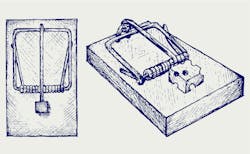New Building Products: A Builder's Essential Role
Products that wear better, last longer, save energy, and enable smart homes abound, with improvements evident across categories, offering innovation, convenience, and good looks. But where are the labor-saving products?
Home building needs new products that address our industry’s decrease in skilled workers. The process of new-product development—identifying opportunities and coming up with products that respond—depends on specific steps. These include assembling a team, identifying an unmet need, looking to other industries for proven solutions, working up a solution, and proving that it works in the marketplace.
1/ Assemble the right team
I’ve served on many new-product development teams and know how important it is to have the right people involved in the process. Assembling the right team
is critical, and cross-functional teams work best. Depending on the category of new product you’re working on, you’ll want to involve homeowners, builders, installing contractors, materials specialists, technology experts, sales, cost accounting, and, of course, research and development personnel. That’s a long list, but all of these experts are essential to making sure that the new product meets the needs of the marketplace at a price the market will support. Involve experts early in the process. Brainstorm potential opportunities and use their combined knowledge to identify reasons why a certain approach will or won’t work. Do this early and often. The earlier you identify why a new product won’t work, the less expensive it will be to start over.
2/ Identify an unmet need
Affordable products that reduce the need for skilled labor are really important right now. Monitor trends. Develop a lower-cost product that meets the same needs as what’s already out there, while requiring less skilled labor to install, and you’ll get the market’s attention for certain. Are you a manufacturer? Look for ways to speed up the installation of your products, and that will bring down the price. Go to the jobsite. Seriously: Go to the jobsite. Get out of the office or lab and see products being installed. Talk with the installers. Solicit their ideas on how to make the product better, speed up installation, and improve longevity. Ask what unmet needs there are in the products that are installed before or after your product.
3/ Recognize the value of field time
Once again, spend time observing, asking questions, and identifying opportunities. Talk with multiple builders and multiple trades in multiple locations. Do you manufacture a product? Try installing it yourself. Bring along people who have never installed your product and have them do a complete install. Ask how the product could be modified to simplify installation. Was it easy to learn how to install the product? Was rework required? What caused rework or inefficient installation? Sponsor an event with a prize for the fastest installation of your product. Interview contest participants to see how they did it and what ideas they may have for streamlining the installation.
Before you make any product enhancements, be sure to first capture baseline data on how long it takes to install the current product and competitors’ products as well. Collect cost data and identify other potential benefits. (Be accurate and don’t overstate the benefits.) Builders and trades are used to hearing outlandish labor-saving or cost-saving claims that prove false. When determining new production costs, keep in mind that the home building industry is slow to adopt new building products. Factor that into your breakeven point.
4/ Look to other industries
Once a need has been identified, research how others have solved similar problems. Automotive, aerospace, commercial development, infrastructure, and manufacturing are all industries in which to identify potential solutions. Which materials or technologies have demonstrated success in other applications? Consider tooling, prefabrication, different fasteners, installation templates, and fixtures. Look at factory installation processes.
5/ Develop the solution
Once you’ve identified an opportunity and have researched potential resolutions, it’s time to fully develop your solution. Consider the supply chain. If you’re bringing new materials into the mix, you’ll want to make sure they will be available in quantities sufficient to meet expected demand. If your solution involves new or innovative tools, consider where current trades buy their tools, as well as how they’d transport the new tool to the jobsite. Develop how-to videos in multiple languages to help installers learn to properly install the new product.
6/ Prove it in the marketplace
Why do new products fail? Sometimes the product doesn’t work. Other times it’s too difficult to install or it’s too expensive. I’ve seen some unbelievable claims by building product manufacturers and suppliers. I’ve also seen products that created more problems than they solved. The best way to avoid this is to involve the cross-functional team described in Item No. 1. Test your products in homes in several climate zones. Follow the test homes throughout the construction process. Talk with each trade that installs products on top of or beside your product.
Building products must adapt to the new realities of the home building industry because the labor situation isn’t going to get better in the short term. Our industry needs new, innovative building products that reduce the need for skilled labor without creating other problems. The solutions most in demand are those that require less skilled labor to install, cost less, and meet or exceed the qualities of products currently in the marketplace.

